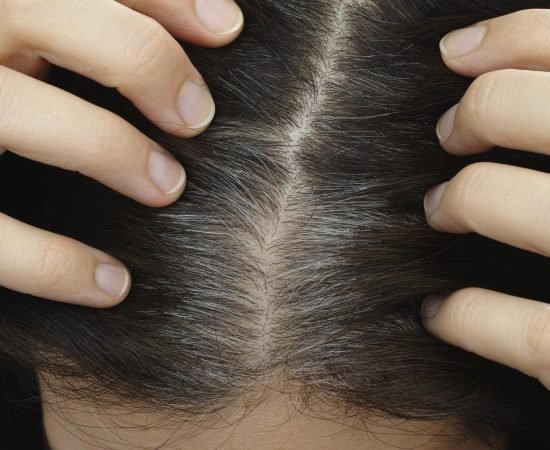Science says “yes” to the question.
There is a long-held view that graying hair is a sign of lived experience rather than just a problem of time and age. The proverb “you’re making my hair gray” implies that thinning locks are a sign of anxiety, but legend has it that Marie Antoinette’s hair turned white in a single night after discovering she would be put to death.
But can a person’s life experience really change their hair color? According to science, although hair color naturally fades with age, some variables, such as worry, may hasten this process.
According to the American Psychological Association, stress is a common response to daily demands, but it can turn harmful when it interferes with a person’s day-to-day functioning.
Stress isn’t the primary cause of graying — genes largely dictate when people go gray —- but “stress may accelerate” the graying process, said David Kingsley, a researcher into hair loss and president of the World Trichology Society. (Trichology is the study of conditions of the hair and scalp.)
According to him, even secondary stressors like anemia, thyroid problems, hormonal imbalances, and starvation can affect hair color.
In mice, stress can deplete hair-pigmenting cells known as melanocytes, according to a 2020 study in the journal Nature(opens in new tab). Melanocytes are produced by stem cells that live in hair follicles.
In the study, researchers provoked a stress response in the mice. In response, corticosterone (rodents’ equivalent of the stress hormone cortisol) and norepinephrine (a neurotransmitter and hormone) flooded into the follicle. The norepinephrine caused the stem cell to change into a regular melanocyte once it reached the follicle, which prevented it from continuing to divide indefinitely. With the stem cell permanently changed, the follicle no longer had a source of new pigment cells. That strand of hair — or in the mouse’s case, fur — lost its source of color.
While those results might not immediately apply to people, a 2021 research published in the journal eLife(opens in new tab) revealed that stress can also make people’s hair turn gray, though the change isn’t always irreversible.
Participants with “two-colored hair”—gray and pigmented in the same strand—or some gray hair were asked to keep a log of their recent stressful experiences. They discovered a connection between stressors like job loss and graying. But eliminating the stressor might stop the graying.
Lead author Martin Picard states, “There was one person who went on vacation, and five hairs on that person’s head turned dark during the vacation, synchronized in time.”
Clearly more than genetics determines when a hair turns gray, Picard said. Not only is there a wide variation in when people gray, from their 30s all the way to their 80s, but “every hair has the same genome, is exposed to the same stuff,” Picard told Live Science. “So, why do some gray earlier and some later?”
Based on mathematical modeling, Picard and his colleagues suggested that hair needs to reach a threshold to turn gray. In middle age, when a person is nearer that threshold, stress can push a hair over the line.
Kingsley concurred. Melanocyte stem cells ended up more defenseless as they age, he said. So included stretch possibly “changes the timing” of graying, he said.
Picard and his co-authors recommended that it may be conceivable to turn around graying hair in somebody who has as of late gone gray. For somebody who has had gray hair for a long time, be that as it may, expelling push is impossible to cause their locks to bounce back to their unique color, as the hair has gone well past the graying limit.
In hone, Kingsley said he doesn’t frequently see hair recuperate its shade. Invert graying is additionally more common in patients being treated for a hair misfortune condition, instead of individuals who are graying ordinarily, he said.
In a perfect world, a follow-up imminent consider would be another, Picard said. Analysts would take after members for months, recording their encounters and measuring their stretch hormones via saliva before analyzing their hair strands. Be that as it may, this can be not yet within the works.
Still, the key message stands. “What we do encompasses a fabric affect on things we utilized to think were irreversible like hair graying,” Picard said.




